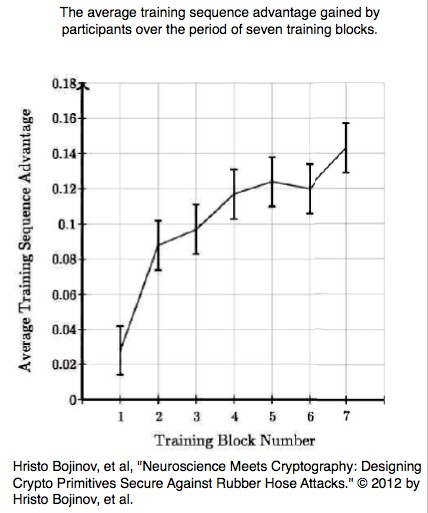Questions 1-11 are based on the following
passage.
This passage is excerpted from Larry Greenemeir, “Forget Passwords,” ©2012 by Scientific American.
It seems like something out of a Robert Ludlum spy novel.
Someone tries to coerce you into revealing your computer
security passwords. You might be tempted to give in, but it is
impossible for you to reveal your authentication credentials.
5 ou do not actually know them because they are safely
buried deep within your subconscious.
Sounds a bit extreme just to make sure no one can log on
to your laptop or smartphone, but a team of researchers from
Stanford and Northwestern universities as well as SRI
10 International is nonetheless experimenting at the computer-,
cognitive- and neuroscience intersection to combat identity
theft and shore up cyber security-by taking advantage of the
human brain’s innate abilities to learn and recognize patterns.
The researchers are studying ways to covertly create and
15 store secret data within the brain's corticostriatal memory
system, which is responsible for reminding us how to do
things. When a person needs to access a computer, network
or some other secure system, they would use special
authentication software designed to tease out that secret data.
20 To test this concept, the researchers devised a computer
game requiring players to tap buttons on a keyboard as large
black dots descending down their screen cross a horizontal
line-very similar in concept to the video game Guitar Hero.
During an initial training session lasting from 30 minutes to
25 an hour, the dots fall at different speeds and in various
locations, forming patterns that repeat until participants
become adept at hitting the appropriate buttons at the right
time. In effect, users' corticostriatal memory becomes adept
at repeating a particular pattern over time, such as dialing a
30 phone number or typing a word on a keyboard without
looking at one's fingers.
The researchers refer to this as "serial interception
sequence learning" training, during which a person
unwittingly learns a specific sequence of keystrokes that can
35 later be used to confirm that person's identity. To log on to,
for example, a Web site, the user would play the game the
same each time that pattern of dots appears, proving his
identity and allowing him access.
"While the planted secret can be used for authentication,
40 the participant cannot be coerced into revealing it since he or
she has no conscious knowledge of it," according to the
researchers in a study they presented August 8 at the
USENIX Security Symposium in Bellevue, Wash. As
currently conceived, the implicit learning approach being
45 tudied might protect against someone either forcing or
tricking you to reveal a password, says lead author Hristo
Bojinov, a Stanford University Ph.D. computer science
candidate. Such coercion could take the form of physical or
verbal threats demanding your password or other security
50 credentials, or it could be a seemingly legitimate phone call
or e-mail designed to coax out this information.
The researchers say they have tested their approach on
370 players so far and continue to add new participants to
their study. The test currently requires at least 30 minutes of
55 training to get reliable results. "It is unlikely that training
time can be shrunk much because this type of brain memory
takes time to get trained," Bojinov says. "It may be possible
to reduce the authentication time [that follows training], but
it is yet to be seen how much." . . .
60 Whether this approach is practical depends upon the
system being defended. It is unlikely, for example, that
Yahoo or Google would implement this approach to security
for their free e-mail services. Would someone want to play a
game for several minutes every time they want to log onto
65 their e-mail? A government facility housing nuclear
weapons, however, could better justify the time commitment
required to log in using the sequence learning method,
particularly if users log in once each day and such an
approach promises to improve security, says Nicolas
70 Christin, associate director of Carnegie Mellon University's
Information Networking Institute.